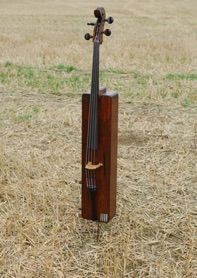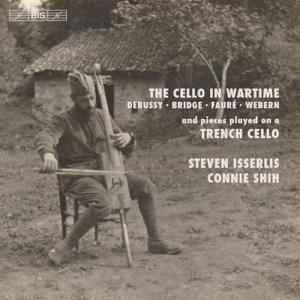Blue Flash Music Trust

December 2004 Julian Lloyd Webber said he would be “delighted” to be the Trust Patron having played in the Horsham Town Hall in 1973 and noted the acoustics
Julian Lloyd Webber/Patron

Inspired by the Simon Bolivare Youth Orchestra El Sistema, that
took the Proms by storm in 2007, Julian Lloyd Webber
became the chairman of ‘In Harmony’.
During an interview on Music Matters Radio 3 Saturday 7.03.09
Julian Lloyd Webber said that ‘In Harmony’ was “a social project rather than a musical project” to “improve communities” and “involve communities.”
Jose Antonio Abreu and Julian Lloyd Webber
(Jose Antonio Abreu died 24th March 2018)
‘It is impossible to overestimate the extraordinary achievements of Jose Abreu who was a Titan in the world of music education. By drawing on the power of music, he saved many children from poverty and crime.’
Julian Lloyd Webber, Founder of Sistema England and Principal of Royal Birmingham Conservatoire


Julian Lloyd Webber has been kept fully informed as to developments where the Town Hall is concerned, and very much supports our efforts.
The Trust recently emailed Julian to congratulate him over the exclusive use
of Sistema, and he replied;
“Thank you – it is a testimony to all the projects hard work. All best. Julian.”
Trust letter published in WSCT 2014 about Harry Triggs’s Trench Cello is at the bottom of the page plus a picture and more information about the Cello, which was of great interest to Julian Lloyd Webber. Steven Isserlis has released a CD featuring Harry Triggs’s cello. Details are at the bottom of the page.
Click on the photo of Julian and hear the interview with Julian about the newly opened Royal Birmingham Conservatoire Sunday11th March 2018 at the Gala concert
It is an endorsement in itself to have Julian Lloyd Webber as patron. Others have sent us endorsements as well in support of our campaign to open up the Horsham Town Hall for community use;
‘I hope you succeed; and that you find strength and support from people who think as you do. The one glimmer of optimism I have for this recession is that it might - just might - lead us back to a set of positive values. For instance, vision, integrity and judgement, coupled with a far stronger sense of worth of people and communities. Short-termism, ego and greed have surely to be replaced by something more affirming.’
Roy Clare CBE, chief executive Museums Libraries and Archives Council
*
After requesting to meet members of the Trust, in Horsham, August 2009, Sir Stuart Etherington, chief executive of the NCVO, (National Council for Voluntary Organisations), told us that when the Trust has access to the Town Hall then there would be plenty of money available. Sir Stuart also sent this endorsement;
‘Many thanks you for meeting me in Horsham.
Good luck with the campaign.’
other endorsements have been received from SEFAN, Steve Heap (Head of Folk Arts England), Martin Snowdon of Acoustic Sussex, and Shirley Collins, MBE.


For more details about Jose Antonio Abreu and the In Harmony
project he inspired go to the link above;
other links are;
http://thetyee.ca/Life/2011/05/25/ElSistema/
and
March 2010
Francis Maude MP was interviewed for Sussex Life and when asked about the Town Hall he said;
“It needs to be for community use. Horsham is not short of restaurants.
I would be very content with community use. It is a lovely building.”
Letter to the WSCTimes re the Trench Cello published 12th October 2014
Dear Sir
Since there has been so much interest in the papers regarding troops going off to war in 1914, I thought it would be good to remind the people of Horsham, and the surrounding area, of what was done by the men of the Royal Sussex Regiment on returning home, which was particularly salutary. Led by Captain Rupert Middleton MC the men of the regiment formed the Blue Flash Company and the Blue Flash Cinemas to provide employment to the many unemployed bandsmen in the Sussex area.
The name blue flash comes from the blue flash on the regimental uniform. Then in 1923 they built the Capitol Theatre, which stood in the area now occupied by Marks and Spencer. The Capitol was a rear projection cinema so that the stage could be a free space for any film to be accompanied by a band. It must have been the latest thing in those days.
Whilst looking for a suitable name for our charity in 2002 the most appropriate name had to be the Blue Flash Music Trust, as a way of celebrating what the men of the Royal Sussex Regiment had achieved in the area of music, having played and entertained right across the Sussex area, for many years. They had another cinema in Shoreham.
Another interesting fact about the regiment and its connection with music is the story of Lieutenant Harry Triggs, and his trench cello, which was recently come to light. The trench cello featured on the In Tune programme on Radio 3, September 19. Harry Triggs of the Royal Sussex Regiment took the cello to the trenches. In 1963 he sold it to the famous instrument restorer Charles Beare, who restored it and it was played by the cellist Steven Isserlis on the In Tune programme, and it proved to have a very lovely sound. The instrument can be packed away in four minutes into its body, essentially an ammunition box. The frog of the bow has a small mouthorgan to sound the note A. The instrument will be on display at the Royal Academy of Music until the middle of October. Another name for this type of cello is a holiday cello. The trust has written to Charles Beare about the Blue Flash story and also passed on our letter to our patron Julian Lloyd Webber telling him the whole wonderful story. Julian said he was fascinated to read about it all.
Read more at: http://www.wscountytimes.co.uk/news/your-say/letter-regiment-s-work-after-the-war-1-6346387

Harry Triggs

Royal Academy of Music advertisement re the The Trench Cello; on display in the Tertis Case situated in the Academy main building until March 2015.
An Account of the First World War ‘Trench Cello’ of Harold Triggs
Harold Triggs was born in 1886 in Eastbourne, where his father was for many years the managing director of Devonshire Park and Baths. He and his two sisters, Theodora and Grace, would have been surrounded by music from an early age, but Grace, who played the violin, was the only one of the three to choose it as a career and she gave various concerts in the area that were well-reviewed.
Harold first worked as an insurance clerk, although he kept up his musical activities by joining the Oxford and Cambridge Musical Club in 1906. He was to remain a highly-regarded and active performing member of the Club until at least 1954, and Laurence Pettitt, one of the Club’s regular accompanists, wrote of him in the Club’s “80th Anniversary History” that he was “a very fine player in some of the best chamber ensembles.”
Early in the War Harold joined the Royal Sussex Regiment, and in October 1915 was promoted to the rank of Temporary Second Lieutenant. At some point he acquired a “holiday cello” of a type made by W.E. Hill and Sons around 1900, and it was this instrument that he took to France, where a number of young French players had already taken up the idea of playing in the trenches. On the front of this cello are painted the Royal Sussex Regiment’s insignia.
The look of Harold Triggs’s cello when seen from the side is more-or-less normal except for the lack of arching, but from the front or back it is rectangular, as an ammunition box would be. The neck is secured to the body with a normal mortise joint before being fixed to the button at the top of the back with a brass bolt. After that it is simple, the fingerboard slides into place on the neck and the top nut is added, as are the endpin holder, the tailpiece, the bridge and the strings.
When the instrument is to travel the bolt that holds the neck in place is removed and the back slides out so that all the fittings can be placed within the box, including the bow in its special slot. The back is then re-attached and everything is ready to go. Re-assembling the instrument for playing takes about four minutes.
Inside the upper end of the back are a number of interesting features. First of all there is an inscription written in 1962 by the well-known war-poet Edmund Blunden who, like Lt. Triggs, was an officer in the Royal Sussex Regiment. This is particularly interesting in that it was obviously written when he and Harold Triggs met again forty-five years later, and Blunden is recalling the cello and their time together at Ypres.
Below this is the remains of a command for Lt. Triggs to appear with his cello at Chateau Lovie, which is known to have been a Corps Headquarters of the Fifth Army from May 1917. Many of the words are faded, but with the aid of digitally enhanced photographs enough have become sufficiently clear to reveal most of what the message is about.
In the top right hand corner, written in pencil, are the names of three officers; Lt. Denis H. Christie of the Royal Sussex Regiment and two officers of the Royal West Kent and the date, September 1st 1918. Just three weeks later, on 21st September 1918, Lt. Christie was killed and Harold Triggs was taken prisoner following a failed attack on the German trenches. He was repatriated after the War ended and was obliged then to write and sign for the War Office an account of the circumstances of his capture, for which he received no blame. It was clearly an action that went horribly wrong, and he was probably very fortunate to have come through it alive.
Harold Triggs visited the Beare firm in 1962 or the following year and invited me to make an offer for his cello, which I did. I asked him if he would play a few notes on it, but understandably he declined, and I think what he really wanted was to know that it was going to be kept and not just thrown away. He died on 9 September 1964 at the Radcliffe Infirmary in Oxford, since when the cello has remained with us. We have recently put it back into playing order.
Researched and written by Charles Beare, Peter Beare and Katharine Oakeshott
March 2017 the Trust learnt that the Royal Sussex Regiment Association Trust was offered the Trench Cello for their museum, but unfortunately this offer was turned down without the members of the Association being aware of it. As can be imagined they were not best pleased.
This CD has recently been released by the cellist Steven Isserlis which features four pieces of music played by Steven on Harry Triggs’s cello. It is well worth a listen.
The Trust has purchased a copy and donated it to the Horsham branch of the Royal British Legion.

